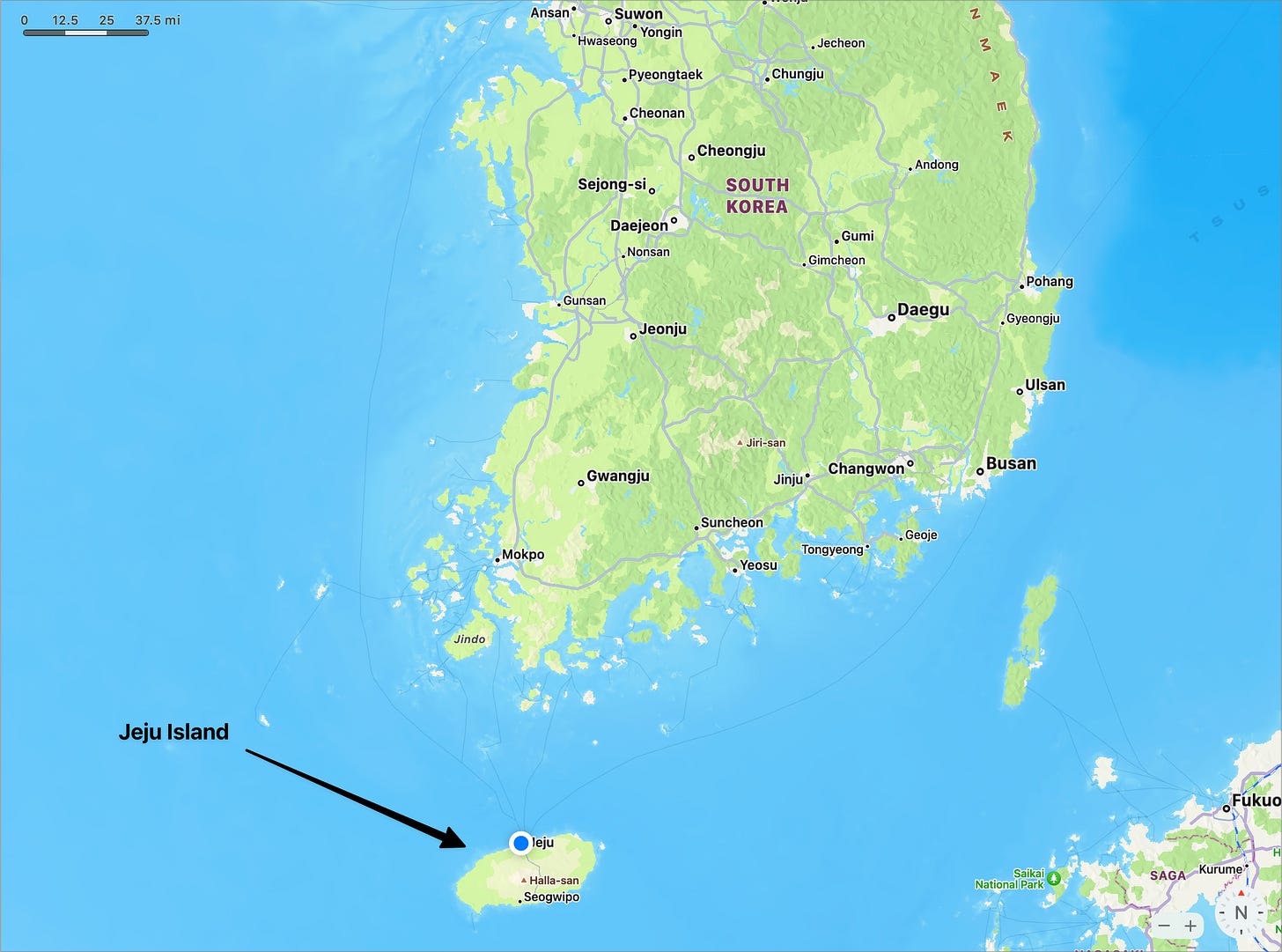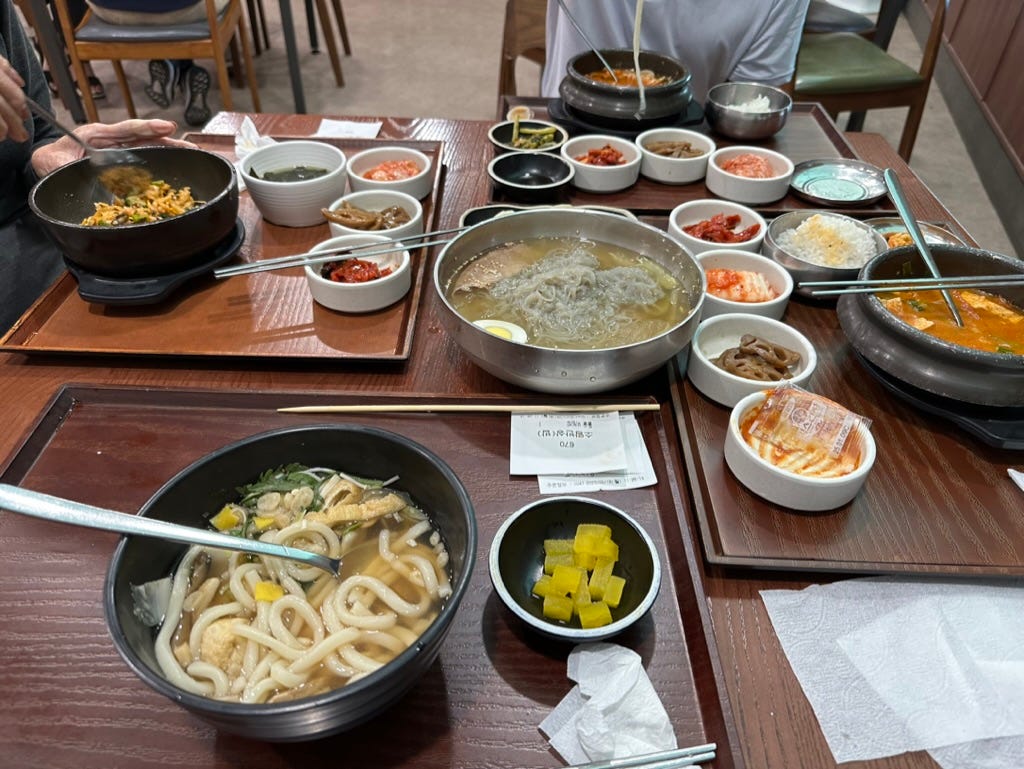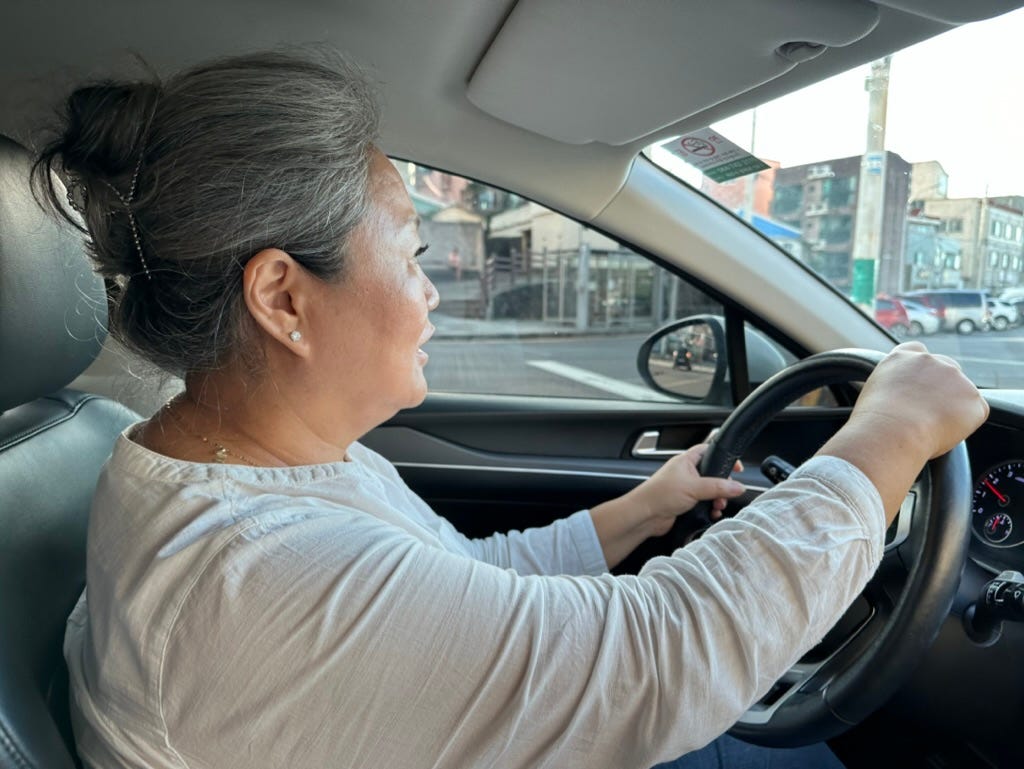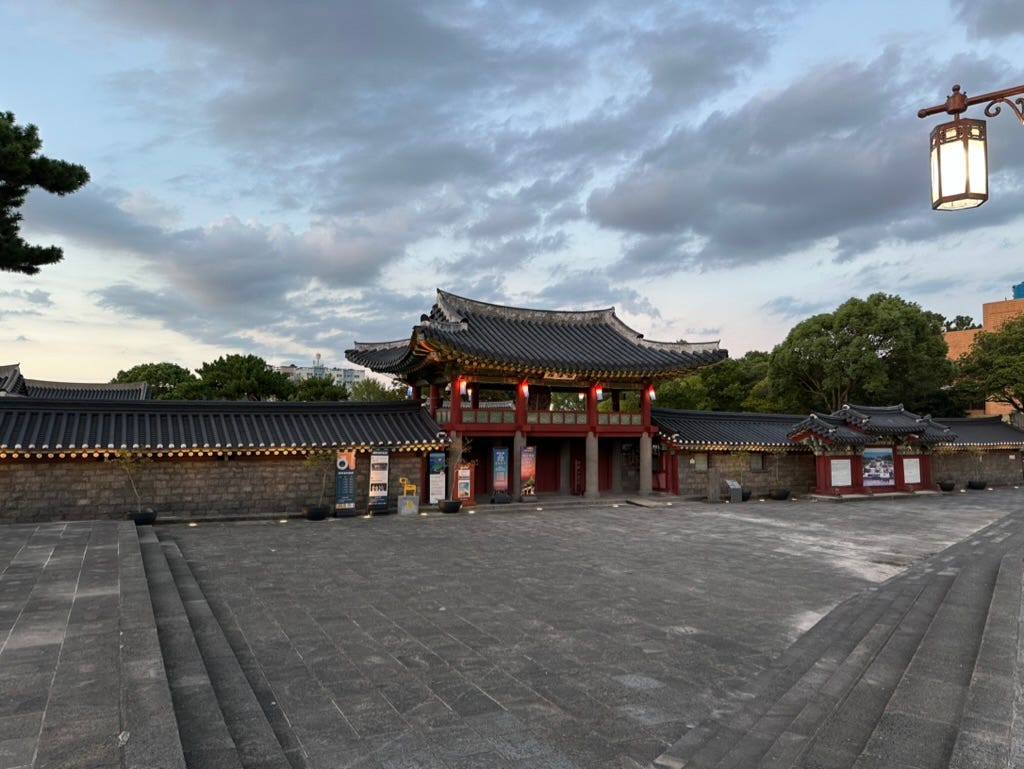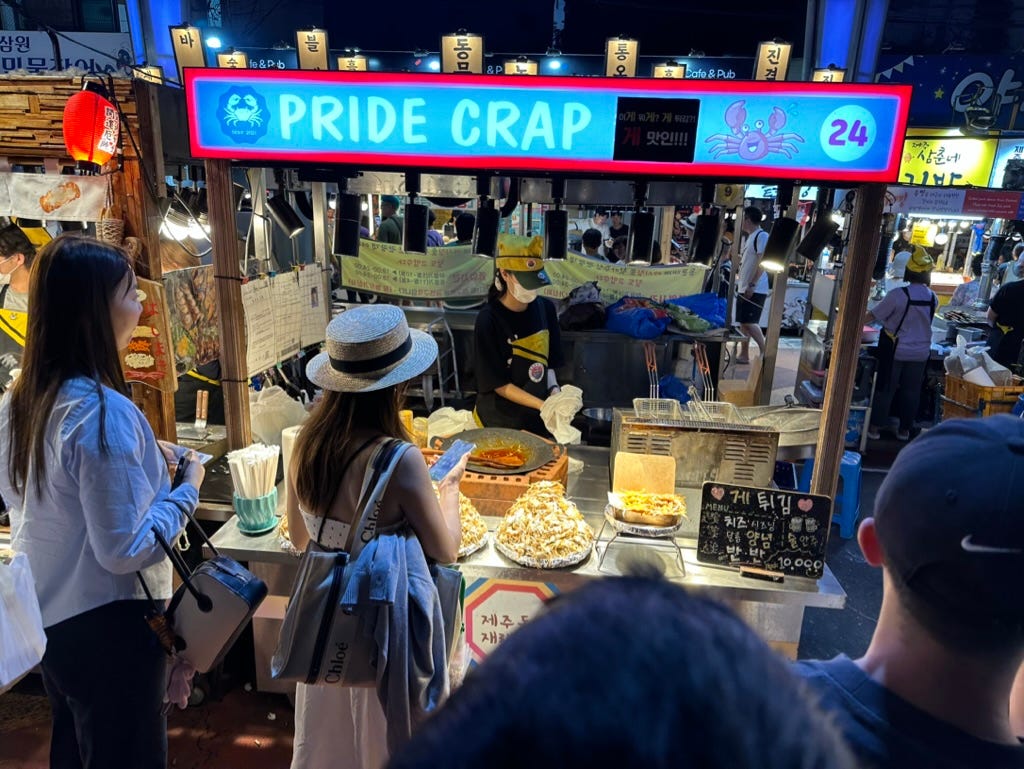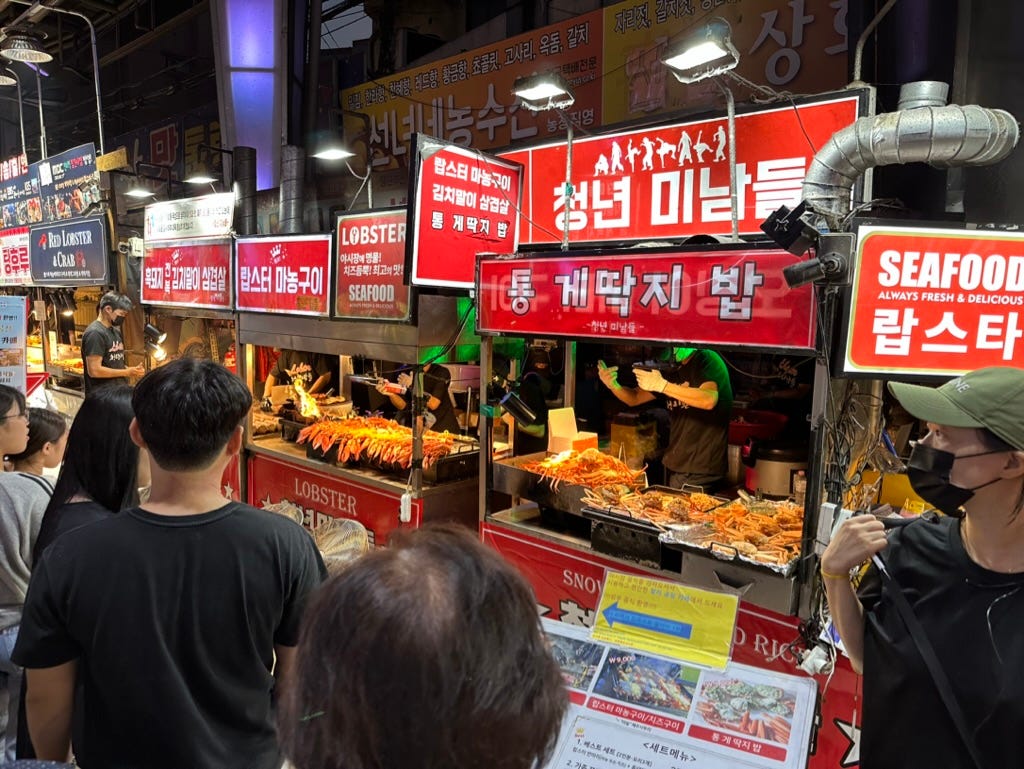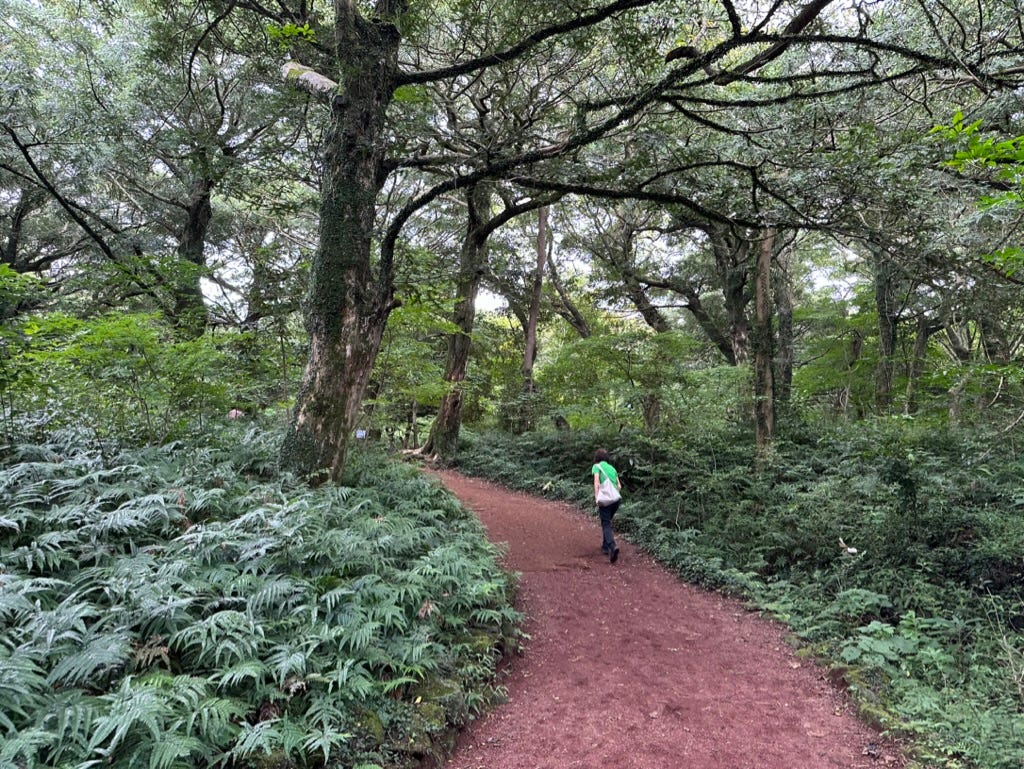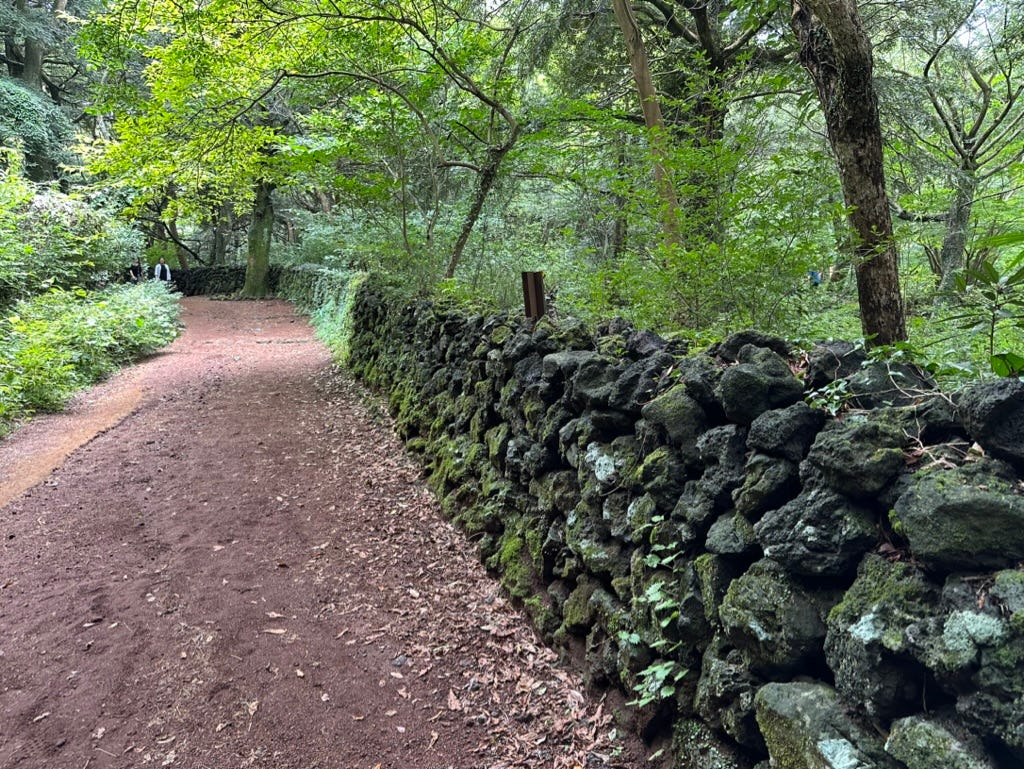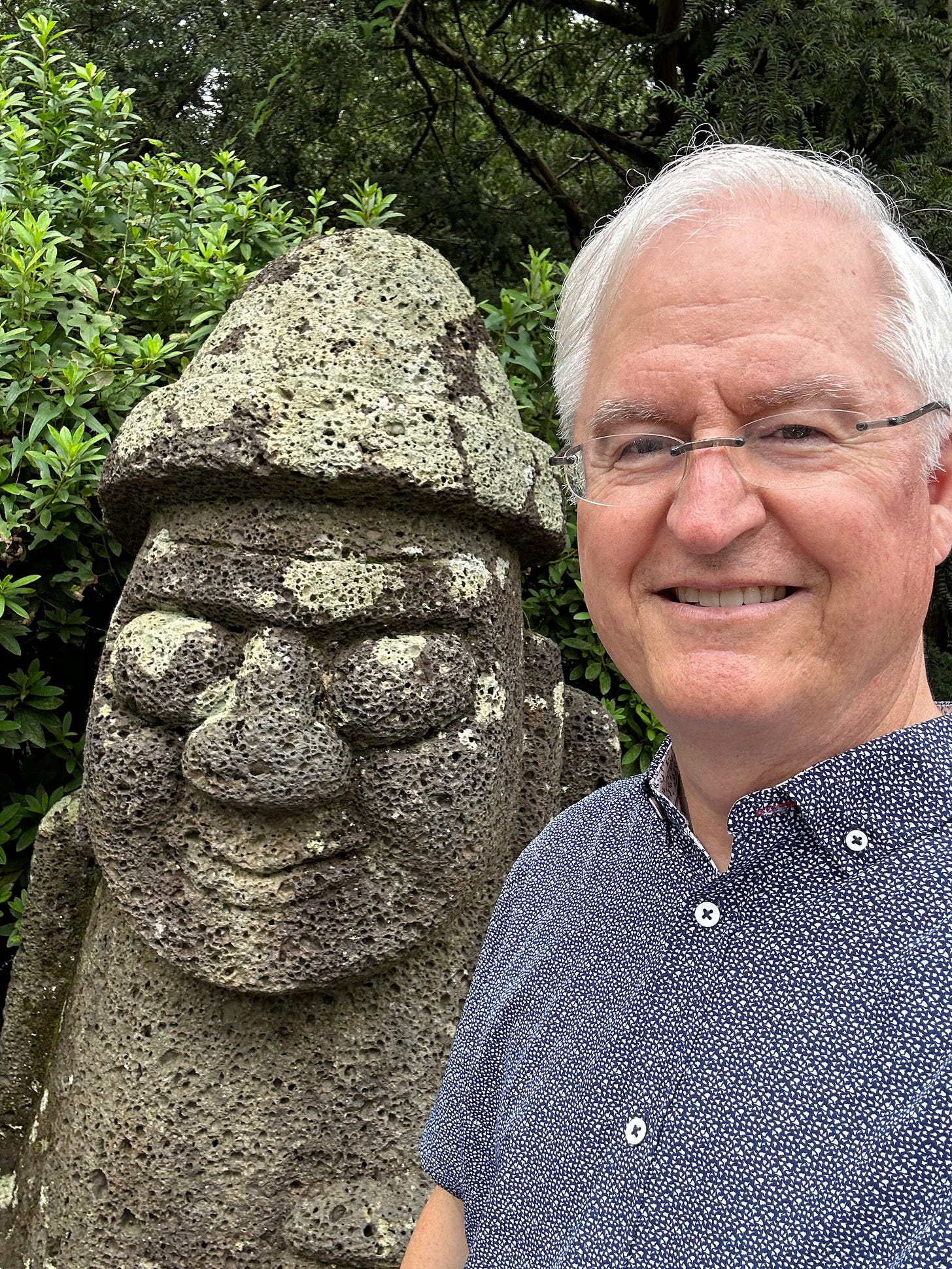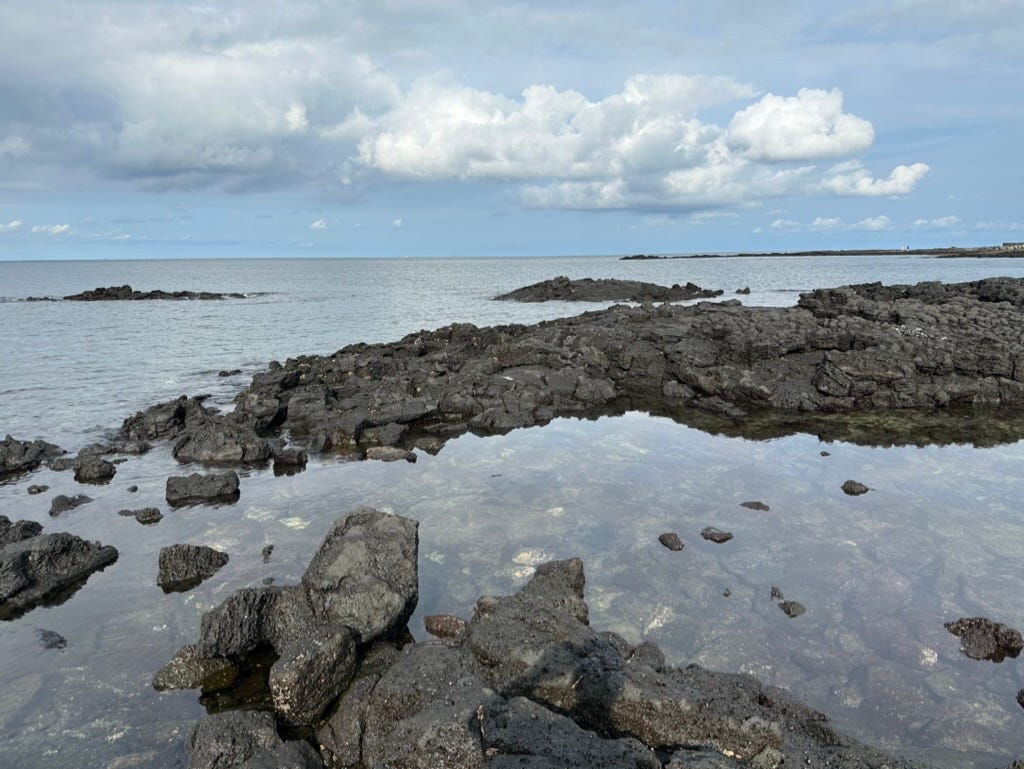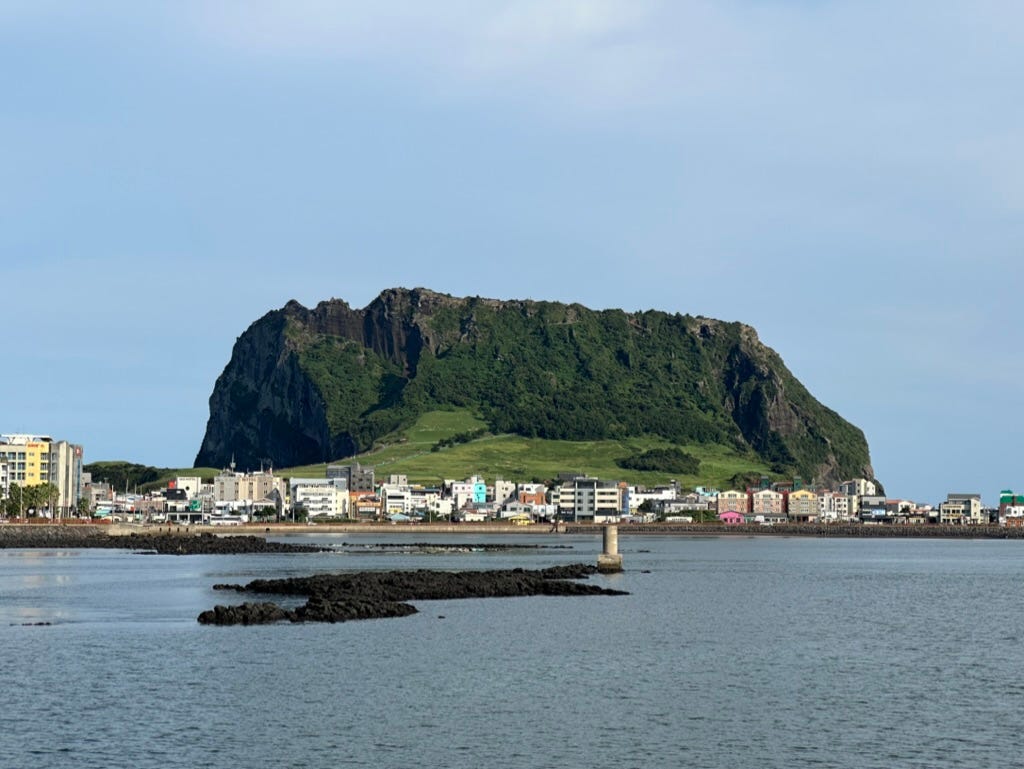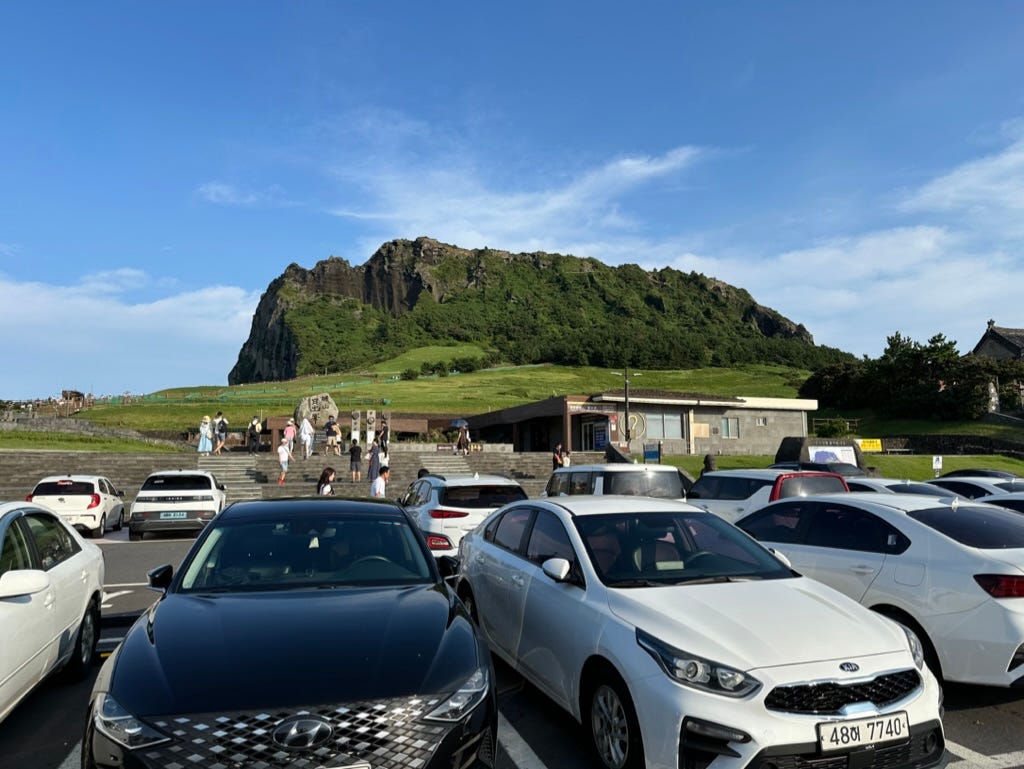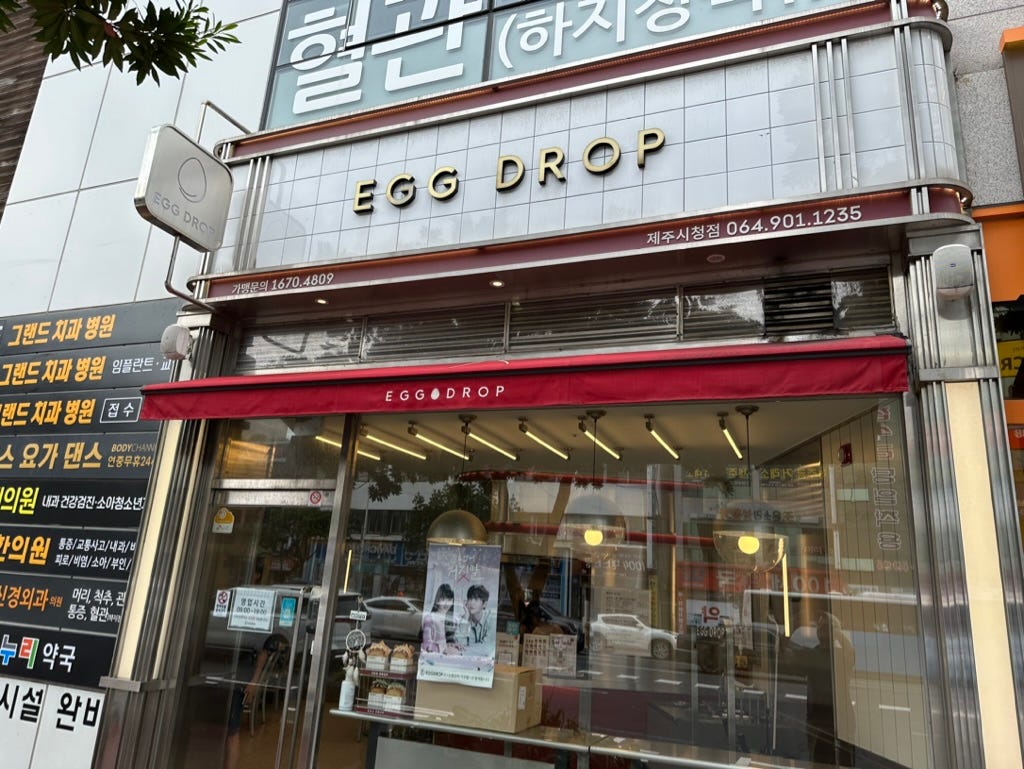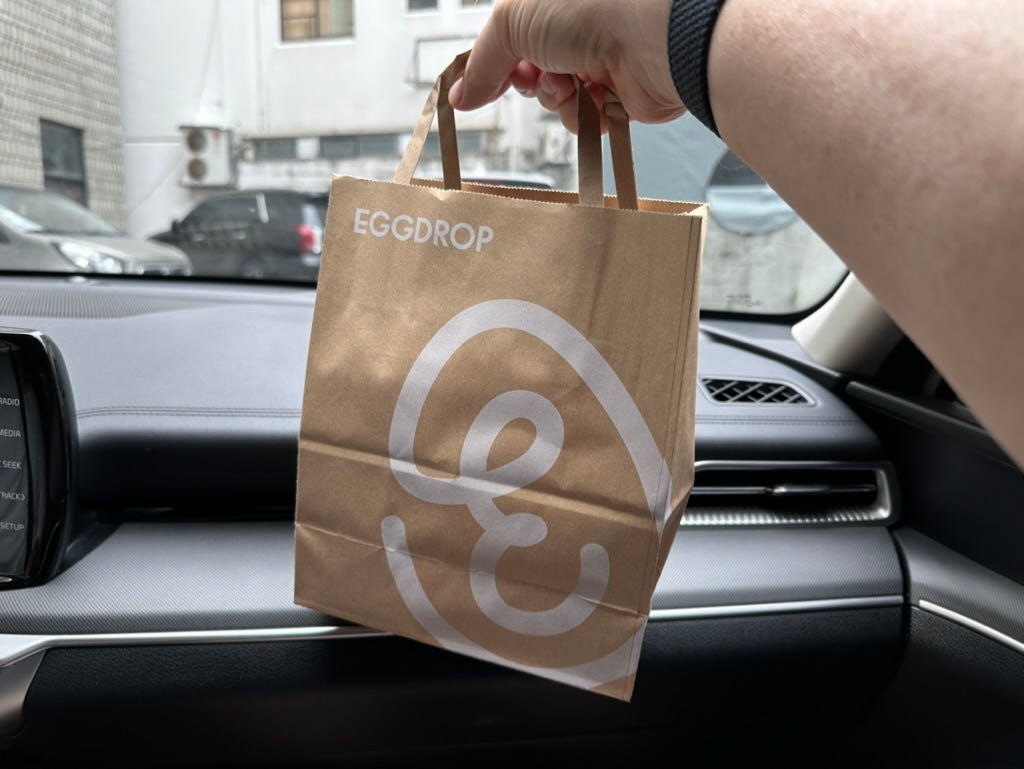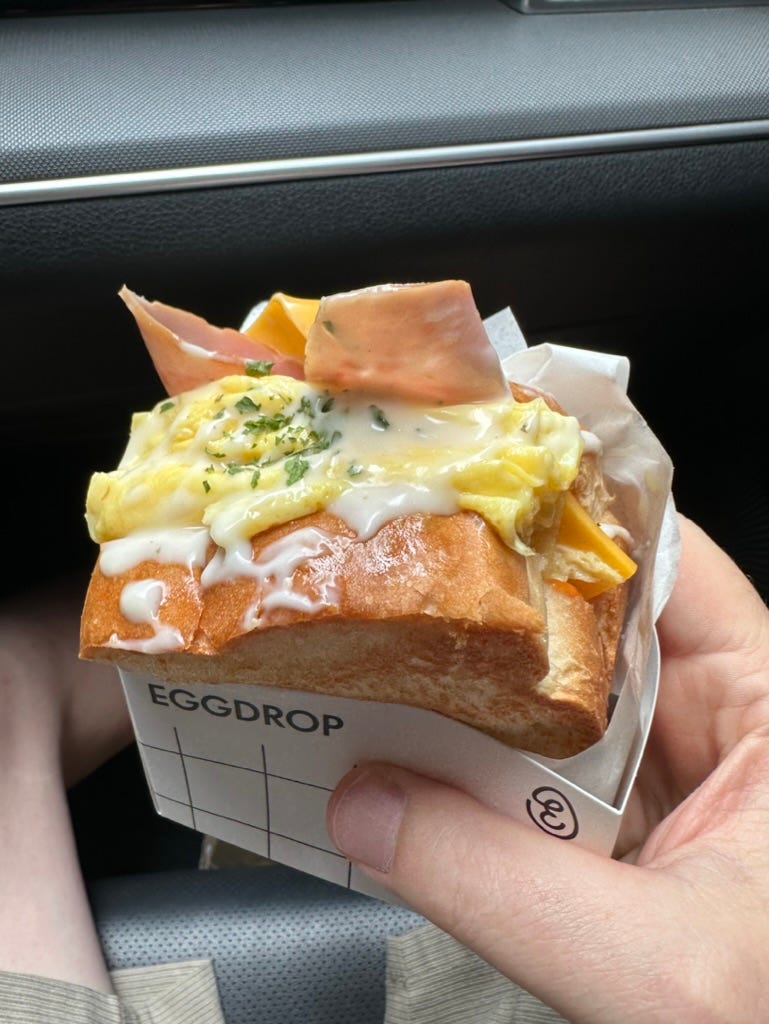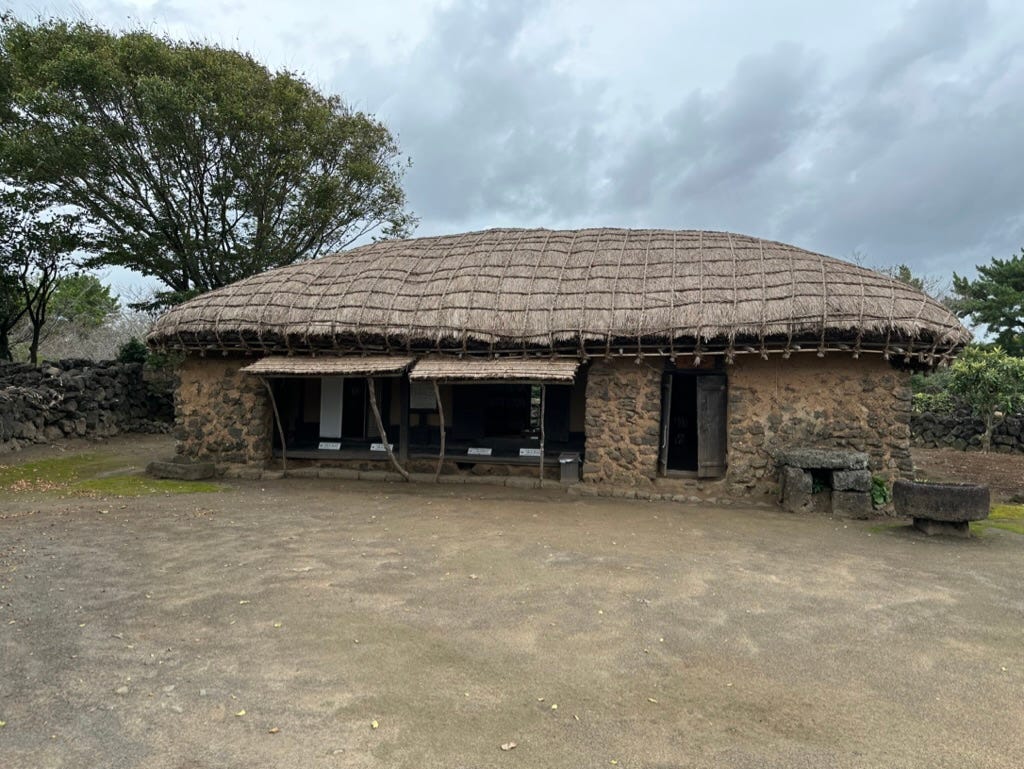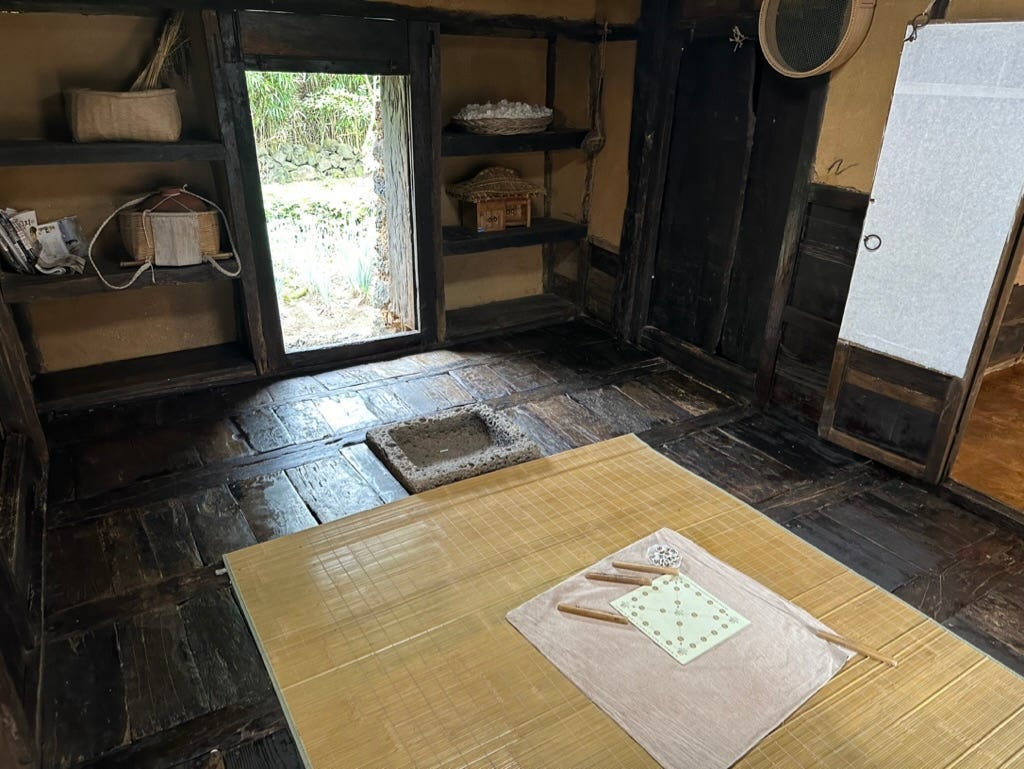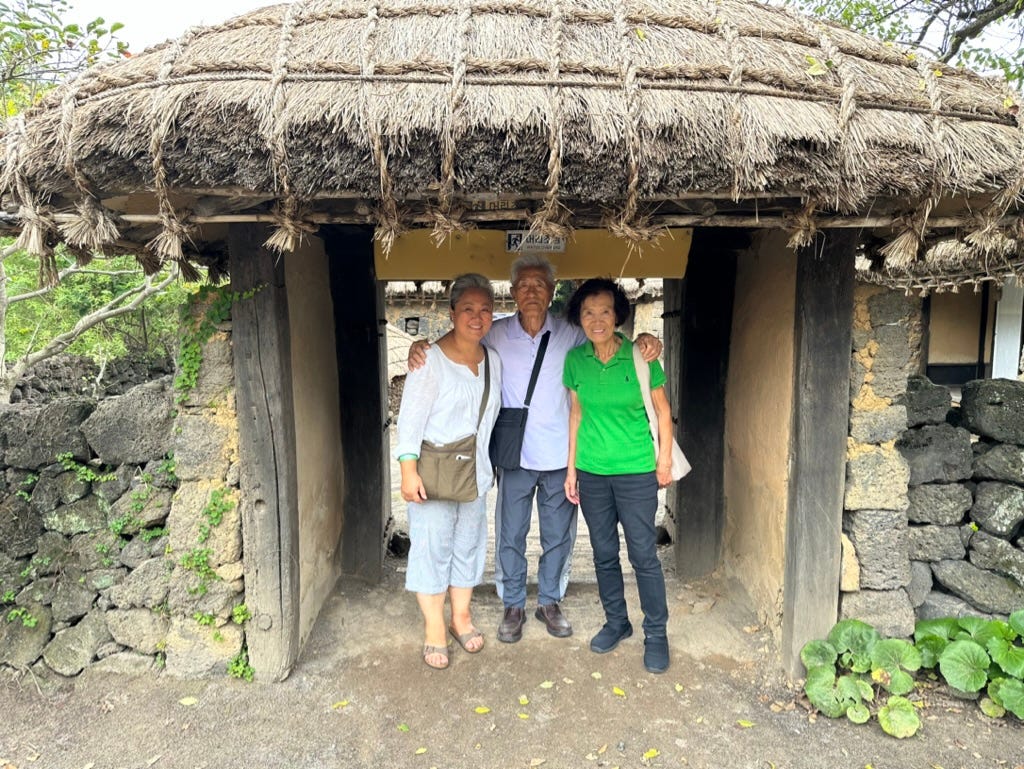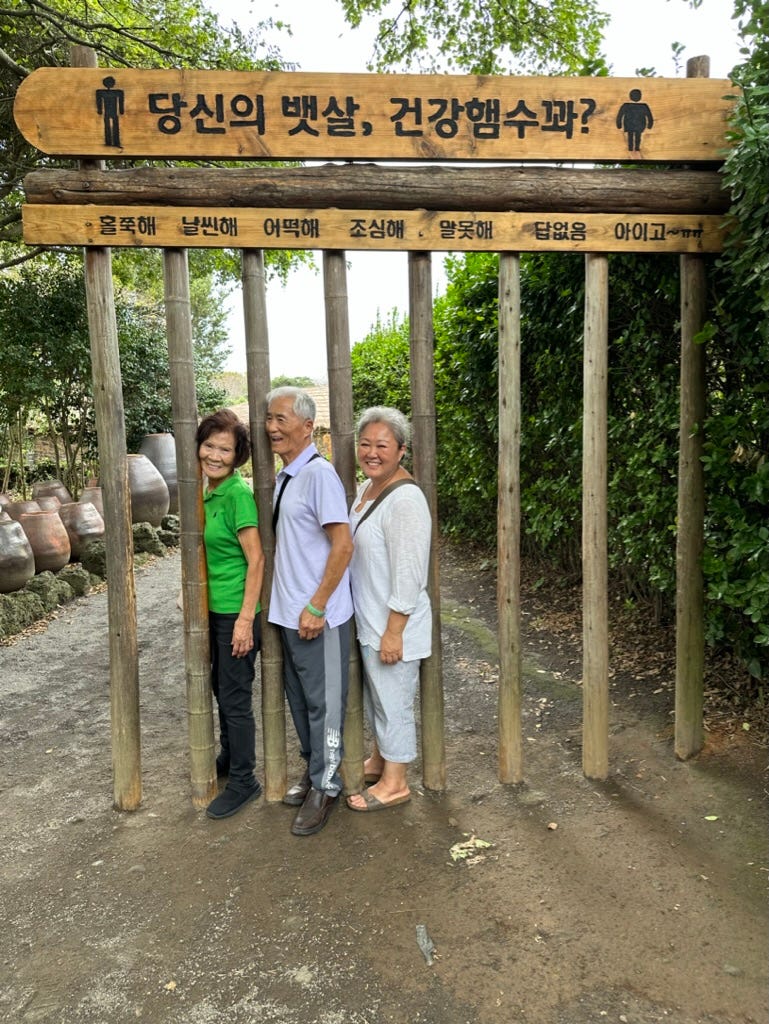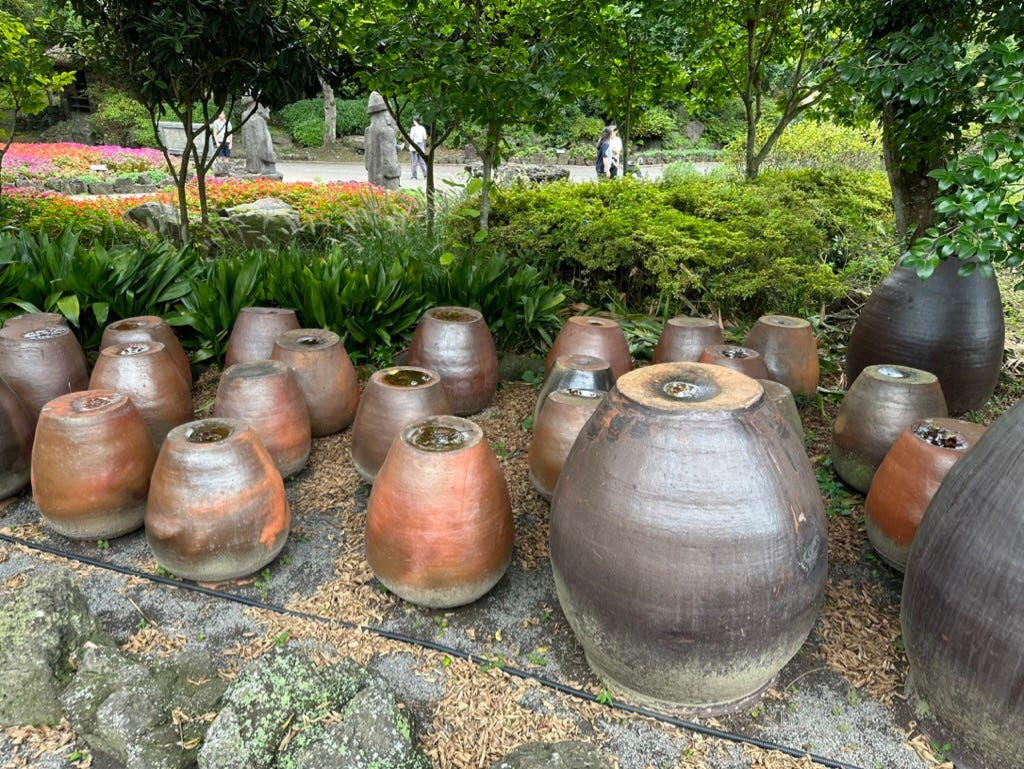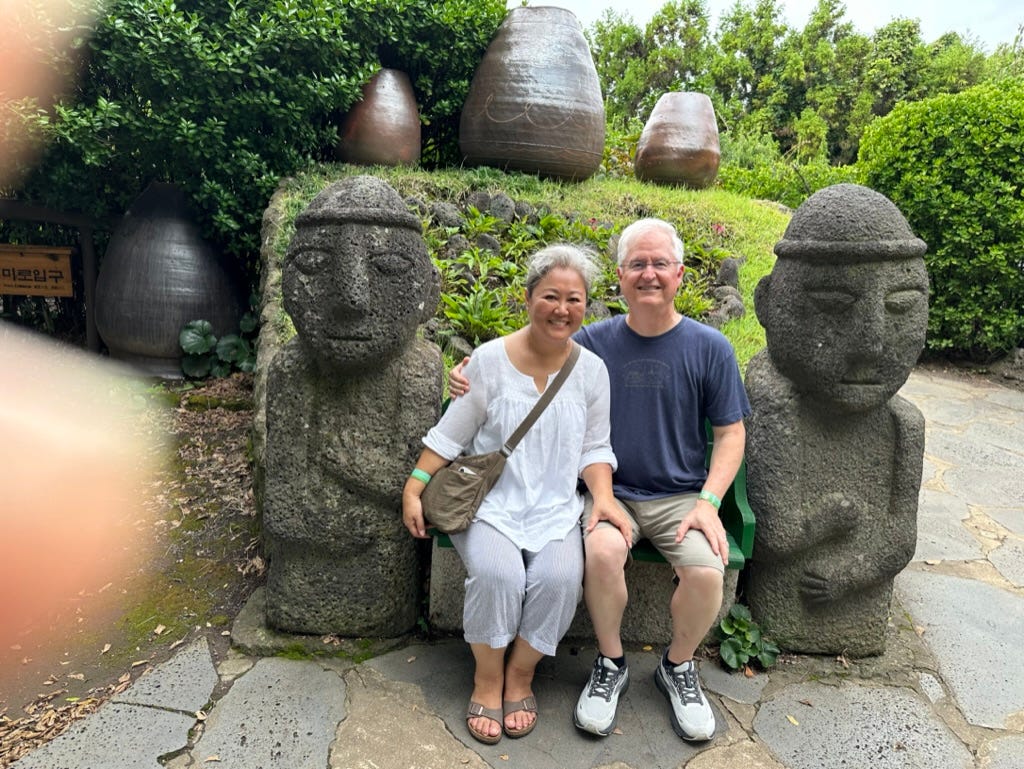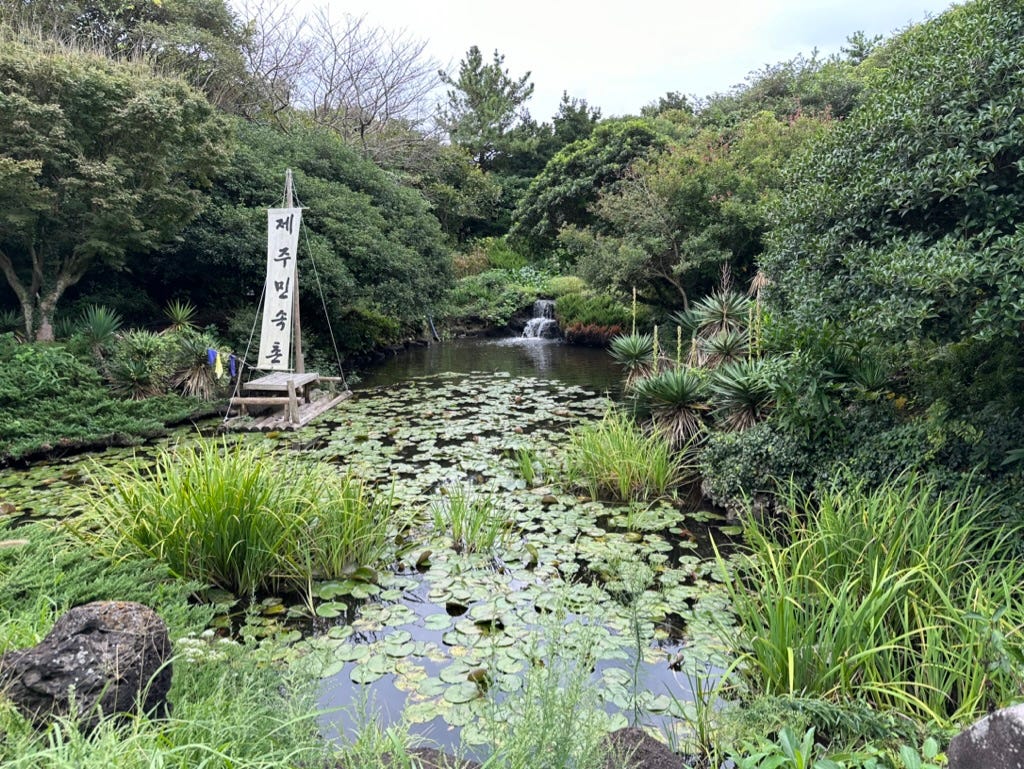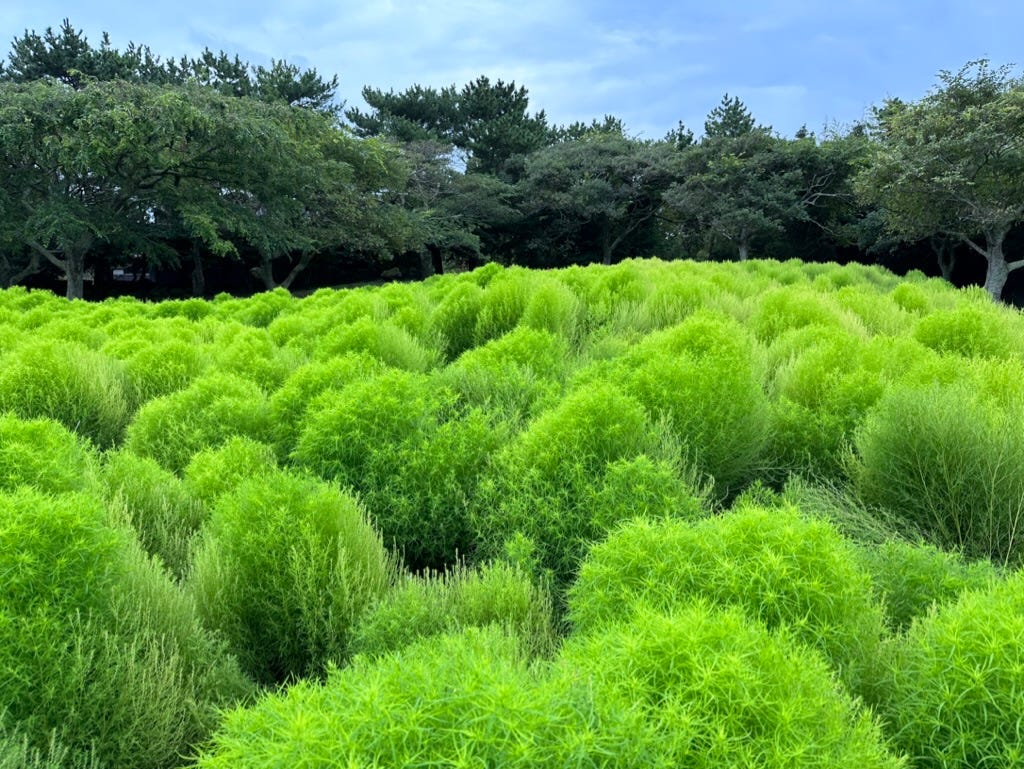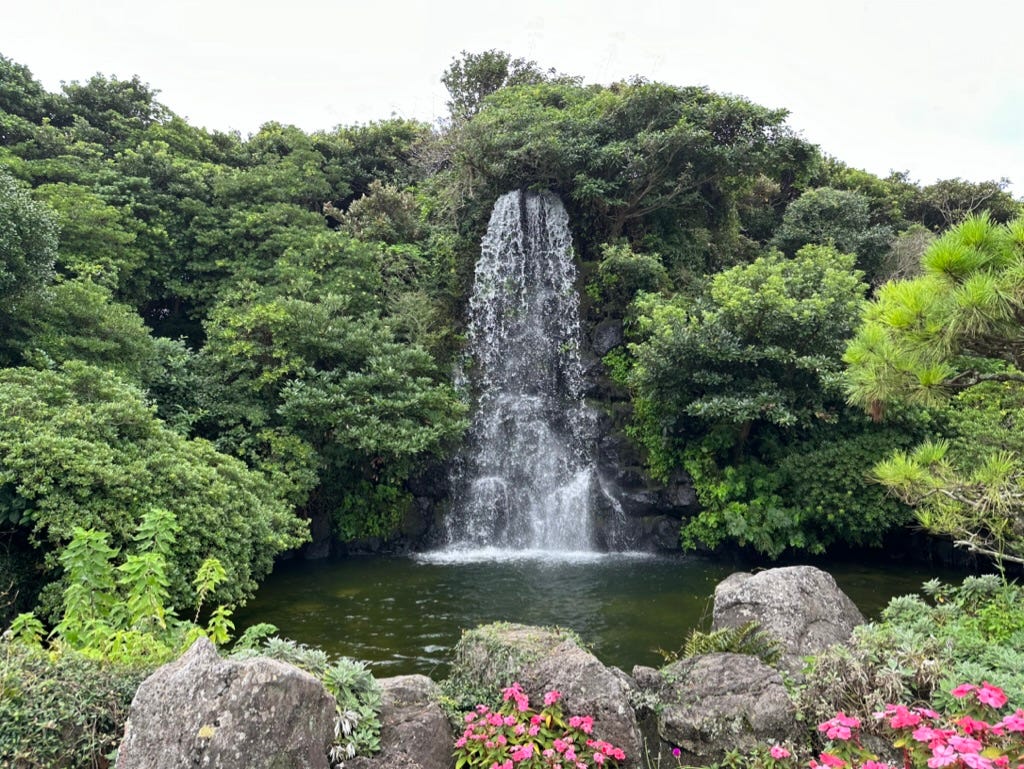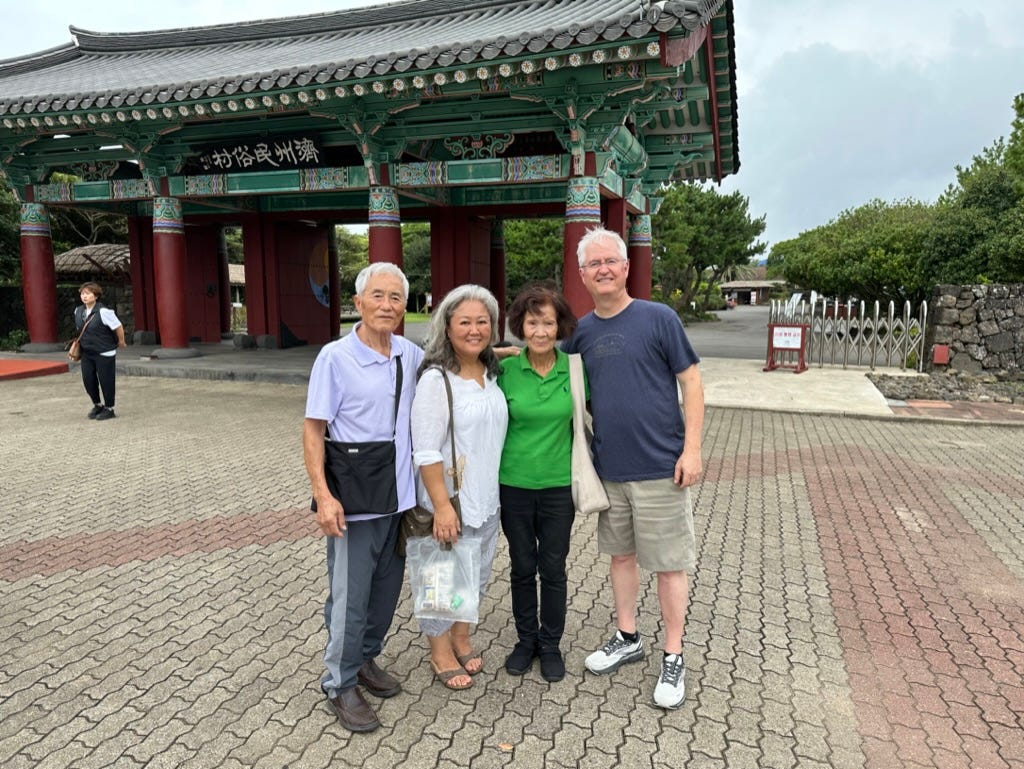South Korea - Chapter 9: Jeju Island
The next stop on our journey was Jeju Island. I’d venture to guess that most people don’t realize that South Korea isn’t just the bottom half of the Korean peninsula but also includes some islands. Jeju Island is by far the largest of them and I believe is as far south as you can go in South Korea and still be in the country. It formed as most islands do volcanically about 2 million years ago. Even someone with almost no geological knowledge (let alone vulcanology - and no, Star Trek fans that’s not the study of Vulcans, it’s the study of volcanos) could figure this out as there’s volcanic rock everywhere. When I explained this to my Mother-In-Law I had to reassure her not to worry as it has not seen an eruption in thousands of years. Because of this, it’s classified as dormant.
It’s home to almost 675,000 residents and according to my wife Jeannie, it started as a penal colony much in the same way as Australia. Today it’s Korea’s Hawaii. It’s very green and lush with lots of shoreline of course. It’s also the only self-governing province in South Korea.
Getting there in our case involved flying from Busan’s Gimhae International Airport to Jeju International Airport. Apparently you can take a ferry but these ferries don’t have seats. If I’m a passenger, I require a seat. If I am required to sit on the floor, I’m not a passenger, I’m cargo. We arrived at Gimhae early to make sure we wouldn’t miss our flight. Since it was lunch time and so much of this tour of South Korea appears to be about eating, we had lunch at the airport. Now, I know what you’re thinking. Airport food. Yeah, it’s never more than sustenance and then barely that, right? That’s been my experience in every airport I’ve visited (which is many both domestically and internationally) except in South Korea. This was lunch at the airport and for most of you it’s likely indistinguishable from the pictures I have posted of extra-airport food.
Honestly if airport food was this good in the United States, I’d be making excuses to fly more.
The flight to Jeju is short, just an hour. When we landed it was time to get the rental car I set up. As a foreigner, you really can’t rent a car on the mainland of South Korea. I mean, in theory you can but in reality you can’t because there are too many possibilities for rental car companies to get charges they can’t pass along to you (apparently) so they prefer not to rent to foreigners. Now you might think that Koreans have a reputation for being very polite, not wanting to make trouble, thinking of others first, etc., and there is some truth to that. However, it is also true that they apparently have no trouble whatsoever saying no. For example, when we have hailed cabs on the street, about half the time, before we even get in the cab, the driver will ask where we are going and if he doesn’t want to go there, he just says no. Prior to this visit, I don’t think I have ever had a cab driver deny me, ever. However, whatever complications result in mainland rental car companies denying foreigners, they don’t exist on Jeju Island.
Having said that, the instructions we were emailed about what to do when we arrived at the aiport on Jeju weren’t great. Eventually we found the empty parking spot that should have contained the bus for the rental car company that would take us off the airport property to complete our rental and pick up our car. What made matters worse was that no one was answering at the contact phone number either. After several attempts I told Jeannie that the rental car company had failed and that we should ask one of the bus drivers for one of the other rental car companies that actually showed up, if we could ride with them to their office an rent a car. Just then, fate showed its interesting sense of humor when the empty parking spot bus arrived. My feelings about the rental car company went from negative to neutral when, as it turned out, the bus driver actually had our details. Off we went to rent our first car in another country which actually was about as smooth as could be expected. The employee that helped us, Charlie (almost certainly not his real name), spoke English reasonably well, explained that he hadn’t answered the phone because he was “helping another customer” and in no time we were driving away. That is to say, Jeannie was driving while I was navigating.
It’s a good thing that in Korea they drive on the same side of the road as we do in the US. They also use green for go, red for stop and yellow for go faster. Their distances and speed limits are measured in kilometers. Ah the metric system. In the US we came so close to switching to it in the early 1970s. Now we look like a bunch of luddites to nearly the entire world. NASA also spent $125 million building the Mars Climate Orbiter and then 10 months of space travel only to have it crash into the surface of Mars because one team was using the metric system while another was using the imperial system. Can we please just switch to the metric system? My kids learned both in high school and have said that the metric system is far easier to learn and use. They don’t have to convince me of course. They have to convince Congress. I should have convinced one of my kids to make that a high school project. Had they succeeded, that probably would have gotten them admission to Harvard.
For some reason, however, in Korean, traffic lights are arranged horizontally with the left turn signal at intersections not located in the same spot as the green light but to the right of the yellow light.
That makes no sense at all to me. Their left turn lanes also have a section on the left that is painted with a broken white line to indicate that you can make a U-turn there. That’s clever. Koreans are also apparently big fans of speed bumps as they are everywhere. Our rental car, when we were not using Apple’s CarPlay, knew exactly where every speed bump is on Jeju Island and announced it just before we experienced it. It also knew where every child protection zone is which is usually close to a school where the speed limit drops to 30 kph (that’s kilometers per hour for my fellow Americans). The have silver protection zones as well with a similar speed limit for areas that are overpopulated with seniors. Have they not seen Death Race 2000? They also often park on the sidewalk which seems to be acceptable. It should come as no surprise that honking ones horn is a rare thing.
I noticed a lot of electric vehicles on Jeju as well as a lot of electric car charging stations which was nice to see. Jeju has many solar farms and has built lots of windmills just off the coast of various parts of the island with more under construction. They aren’t pretty to look at but they are good for the environment. Clearly generating their own clean power is a priority. That’s unsurprising given that Jeju is both an island and self-governed. It’s also got a temperate climate not unlike where I grew up in Southern California. Such climates encourage people to spend time outside and when that happens, people care more about what it’s like outside which means caring about the planet.
When we arrived at the apartment we rented in downtown Jeju City, I think we were all concerned about what it might be like given the building’s exterior. I would have been more convinced it was populated with less than fully legitimate businesses than apartments. The address didn’t even have an apartment number, just a floor. It couldn’t occupy the entire floor, could it? The four of us and our luggage crammed into the second smallest elevator in which I have ever ridden (the smallest being on in a 300 year old apartment building in Paris which was so small, I would not advise riding in it with another person unless you know them very well) and off we went to the 5th floor which indeed had only a single unit and explained the lack of an apartment number.
We got inside, took off our shoes (because you never, ever wear shoes inside a Korean household) and entered what turned out to be a very nice, modern apartment with an ocean view. It wasn’t the two bedroom apartment it claimed to be however. The second bed was actually in the living room.
After dropping our stuff it was decided by my Mother-In-Law that the first order of business was to check out the local market. As the market in Jeju is unremarkable compared to the other markets I’ve discussed in previous chapters, I won’t bore you with the details. However, on the way there we did come across a very old building that once was the seat of government on Jeju Island.
Apparently it burned down several hundred years ago and back in the 1990s it was rebuilt though now it’s a tourist attraction as government employees tend to prefer more modern accommodations. Actually, there were two noteworthy vendors at the market. The first was selling cooked crab.
The second involved three guys that had loud music playing while they danced, rapped and did a tiny bit of actual cooking with a blow torch. Apparently they are famous on YouTube.
The next day we drove about a quarter of the way around the island to visit a forest I found online. It was quite nice and was a good excuse to stretch our legs.
Yes, that stone wall is made of lava rock. It seems that on Jeju Island, nearly everything that can be made of stone is made of lava rock.
I stopped to take a selfie with this very popular gentleman whose effigy is all over Jeju Island. It’s called a 돌하리방 (Dol hareubang). According to Jeannie, he’s a man who waited for his daughter to return from the sea and he waited so long, he turned to stone. I can say from not entirely dissimilar experiences, that I know how he feels. We can’t find any sources to backup Jeannie’s story that she claims she hear on NPR but it’s a good one so that’s enough for me.
After a few hours in the forest, we continued along the coast just to see what ever we might come across. We stopped along the way when we found an area of the coast covered in lava rock. Shocking.
Driving further there appeared on the horizon an enormous mountain that just seemed to have jutted up from out of nowhere.
It turns out that this must be one of many extinct (sorry, dormant) volcanos as a satellite photo revealed its crater. As we got closer, it became clear that you can, in fact, hike up to the summit but none of us were in the mood to do that. We’d already gotten in our steps for the day roaming around in the forest earlier.
When we are at home Jeannie and I often watch a YouTube channel called Korean Englishman. It’s hosts are two young Brits who have spent enough time in Korea to have become fluent in the language, learned a lot about the country, its culture and for at least one of them, married a Korean. Their episodes mostly involve introducing their fellow unsuspecting countrymen to Korean food and culture to which they have never before been exposed with somewhat predictable results. In one episode, they took a group of freshly graduated high school students from their alma mater to South Korea. One of the activities involved a visit to what would on its face appear to be a decidedly un-Korean restaurant called Eggdrop.
This is a Korean-based chain that sells what is essentially scrambled egg sandwiches. It’s actually better than it sounds. First, the eggs are still quite hot (as Koreans also like things so hot that it makes me wonder if there’s some kind of cultural masochism going on), you can get them with the usual suspects (ham, cheese, and even some very Korean toppings such as bulgogi which is marinated, shredded beef). I have never had anything like this and the Brits made it look so yummy that it was definitely on my list of things to try while in Korea. I do have to admit that the local H-Mart (a Korean grocery store chain that conveniently has a location in Austin, Texas where we live) has a vendor in their food court that makes egg sandwiches but I had not yet tried them. I was waiting to try the real thing in South Korea itself. It’s just a different experience entirely when the person making the food does not understand a word you are saying. And to be fair, I’m in their country. So we stopped by the local Eggdrop where after a few taps on a computer kiosk (which they already had in Korea the last time we visited in 2017 - come on America, get with the program), I somewhat patiently waited for what I was hoping would be a unique dining experience. Because we were going to continue our driving tour of the island, I got it to go.
It really was as delicious as it looks.
For those of you thinking this doesn’t look very healthy, learn to live a little. Hot scrambled eggs with slices of ham and American cheese on toast with some kind of sauce that made it ever so slightly sweet. I will make every effort to have another one prior to our return flight to America. The next time we visit H-Mart, I will be conducting a thorough analysis of their egg sandwich offering to determine how it compares to the in-country magnificence that was the American Ham Cheese Sandwich.
As we drove up the coast (or as we drove out of Jeju City because who am I kidding, the sandwich didn’t last that long) I veraciously gobbled down my eggcellent sandwich. We drove to a spot about 1/3rd of the way around the island where an old village of houses made from volcanic rock, mud and thatched roofs has been lovingly restored.
This is just one of many homes that only honestly look like a good alternative when you consider that the other option is living outside. Still, these didn’t come with a mortgage or an HOA so there’s that.
They are nicer inside than you’d expect from their exterior and yet so small you’d think the cost per square foot was a limiting factor. They are as simple inside as they are out.
The head of the village apparently had his own small compound.
But something tells me this girth-measuring apparatus is not original.
Apparently they were very good at making large pots because when you’re Korean, you really can’t make too much kimchi. Second only to air, Koreans need kimchi.
It would be incomplete without at least a few stone guys. These appear to be younger renditions or at least at a time when Stone Guy would have fit through the left-hand side of the girth-o-meter.
And honestly it was very beautiful.
The following day we decided to continue the drive around the perimeter of the island which took longer than we thought. I had Apple Maps on the panel in the car showing where we were and where we were going. However, Apple has not quite gotten around to adding speed limit data for Jeju Island and there are not enough iPhones here for them to display traffic data either. As a result, the estimates as to how much time it will take to reach your destination and what time it will be when you arrive there are not at all accurate as it turns out.
We arrived back at our 5th floor-exclusive apartment having enjoyed another ride in the what could be Jeju Island’s smallest elevator and relaxed for our final evening on Jeju before flying off to yet another Korean destination. Stay tuned.

